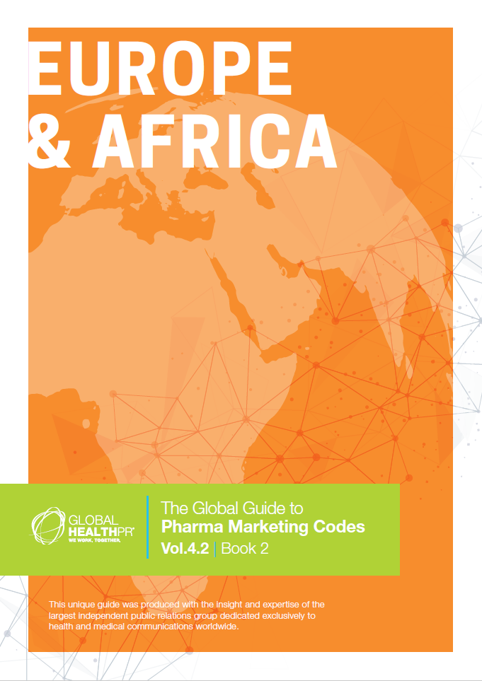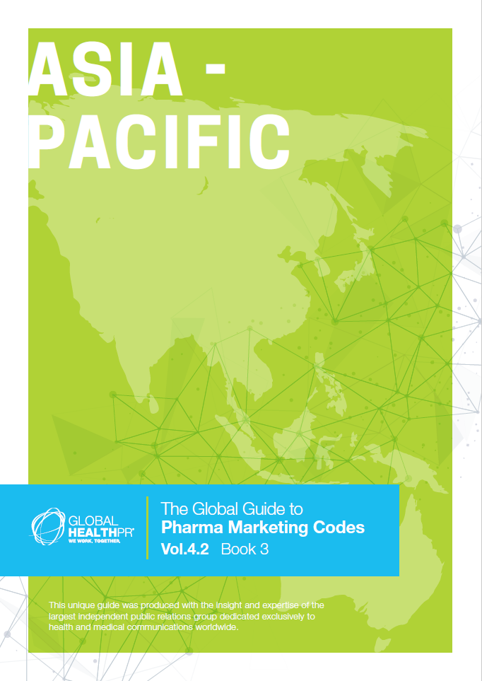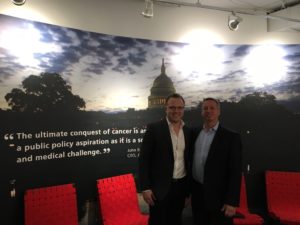by ghmc
Public Affairs
By Chris Bath, Managing Director at Aurora Healthcare Communications
The world is in shock.
Pandemic ‘recovery’; cost of living crisis; rising inflation and geopolitical instability at an all-time high for a generation. We’re in the middle of a polycrisis, and that’s not all.
Around 1.5 billion people will be going to the polls this year, as significant elections are taking place in more than 50 countries which between them hold almost half of the world’s population.
Uncertainty, then, is a constant we have come to live with. The result of this, is that we have come to crave something many people shy away from: change.
Global change coming to life science is good for all.
The life science industry, often proving to be resistant to most existential crises and pressure, has faced unprecedented low levels of investment, M&A activity and, as a result, lagging clinical pipelines. 2023 saw the lowest number of clinical trial starts since 2018.
If the world is in shock, the industry needs a shock of its own to ignite the change that innovation needs. This change is round the corner.
‘Pipeline in a product’ therapeutics, along with new and complex modalities, that will transform medicine, and, if given the right access environment, will also necessitate a reset, or change, in how we treat disease. Countries are rapidly standing up modern health systems that can accommodate these new innovations (let’s park capacity for a second, because that’s an altogether different challenge) and this rapid expansion requires genuine global expertise.
According to Deloitte, one of the main reasons why larger biopharma organisations miss their growth targets is because of an inadequate understanding of market dynamics and a complete misunderstanding of customer needs. A shameful finding given the hyperconnected world we live in. In today’s world, there really is no excuse, and change is not being embraced to stay in sync with the world today.
A true worldview and ‘global’ expertise then are paramount. But there really is no such thing as ‘global’ when it comes to life sciences. With every border comes a new culture to embrace, a new set of compliance considerations to consider and a new health system to navigate. The reality is that our work needs to resonate with countries and regions far more diverse than the term ‘Global’ allows.
For global strategy to be a success, you need to think ‘Glocally.’
Overcoming tunnel vision by thinking ‘Glocal’
How we tell stories about breakthrough science and the value this delivers to countries with unmet needs, demands a worldview on a range of issues to make sure medicine gets into the hands of those who need it.
Recent changes to EU regulations (for example, the Clinical Trial Regulation and new Medical Device/IVD Regulation) and other market uncertainties, such as cross-border collaborations and their potential impact on market access, are making it increasingly difficult for biopharma and biotech to forge ahead.
For programmes to resonate (and results to follow), multiculture, diversity and the need to consider all stakeholders in the care pathway are important, and that requires more than just a local presence, it necessitates a true understanding of local market dynamics. That means:
- Ensuring clinical trial recruitment materials are trans-created, so they not only resonate in-market, but also, they engage sites and recruit patients, and protocols co-designed with patient experience data.
- Commercial strategies are built with worldwide insight, supporting activities designed to drive uptake of medicines and new technologies through creative-led medical communications.
- Market access plans need to be shaped with payors years in advance of a commercial launch, and the right data generated through clinical development programs to gain reimbursement.
- Building global integrated teams that deliver across time zones to deliver at pace with cultural and compliance understanding built in.
As innovation lays a path for companies to expand internationally, we need to re-calibrate our understanding of the needs of nations and regions and people in a way that demands genuine expertise.
Our clients need partners who understand all these challenges, and in fact are purposefully designed to address and embrace them. So, that’s what we’ve built.
A Global vision with local precision
With decades of experience across every region of the globe, we’ve witnessed firsthand how the nuances of local geographies and cultures influence each phase of drug development and commercialisation. These insights have shaped our approach, leading us to create a platform of services that operate in harmony across the globe, delivering results that are truly greater than the sum of their parts.
By integrating solutions from clinical trial enrollment and medical communications to consulting and advertising, we’ve created an ability to take a wide-angle view, offering comprehensive, end-to-end support that spans the entire lifecycle—from early clinical milestones through to launch and global expansion.
This strategic offering is deeply ingrained in our heritage and our long-standing commitment to Global Health Marketing and Communications (GHMC)—the world’s largest network of independent healthcare agencies. Together, we’ve seen the difference a strategic and sensitive approach to multi-market programmes can make, as part of a deep understanding of healthcare across markets, cultures and codes.
As we seek to deliver change, we need to embrace it. And that’s what a truly ‘global’ partner like Spectrum Science is designed to do. If you want to see what this difference looks like, get in touch.
As my first week representing VIVA! Communications, Australia as part of the GLOBALHealthPR Professional Exchange Program at Spectrum in Washington D.C. drew to a close, my head was spinning with all of the health PR-related information I’ve recently gleaned.

This week I’ve participated in several interesting brainstorming sessions focusing on campaign concepts and new business development. Observing the communications process involving Spectrum team members across the U.S., from Washington D.C., and New York to Atlanta, and those working from ‘virtual’ offices at home, has proven a truly fascinating exercise.
I was also granted the opportunity to meet with some of the business leads at Spectrum D.C., including Public Affairs lead, Al Jackson, who explained the pivotal role that communication plays in U.S. health and medicines-related politics. Citing several case studies, Al broke this somewhat complex subject matter down with ease, affording me unique insights into the invaluable role that both he, and the Public Affairs division plays at Spectrum, to ensure fairness of communication for U.S. healthcare providers, pharmaceutical companies and patients.
The highlight of my week was obtaining a glimpse into U.S. healthcare policy and public affairs. On Tuesday, I visited Capitol Hill to observe a U.S. Senate hearing into health policy, focusing on the potential ramifications of introducing Food and Drug Administration (FDA) approval for laboratory-developed tests (LDT’s) of a certain type of in-vitro diagnostic. Currently, no such approval is required.
The hearing armed me with fascinating insights into the American approach toward deliberating the role of administration, and government in diagnosing illnesses and delivering precision medicines to the public. Those in favour of FDA regulation (primarily the Democrats) argued LDTs had not been sufficiently validated, and were therefore at risk of inaccuracy, and that patients are not informed that their tests fail to undergo rigorous FDA approval. Those Senators opposed to drug regulation claimed that such approval would slow the process of diagnosing illnesses and introducing life-saving medications to market. Furthermore, those against (mainly the Republicans) stated the labs (including branches of leading care centres and research hospitals) would go bankrupt if they had to pay for such regulation.

Further to this, I was able to meet many members of the Spectrum team, including Kaitlin Bowen, who, like me, is participating in the 2016 GHPR exchange program. This allowed us a great opportunity to chat about the program, and I was able to provide some insight as to what I had uncovered about Spectrum, while allowing Kaitlin to ask questions about VIVA!, and how we work in Australia.
As a former journalist, I also really enjoyed my visit to D.C.’s Newseum, which offered me a great insight into how journalism has been involved in capturing and shaping American history. Each of the exhibits in the Newseum offered fascinating insight into the history of US news reporting, and allowed me an idea of some of the most iconic news stories ever published in the US.
For me, it was amazing to learn about the role that the first amendment has played in the history of news reporting in the USA, while also being allowed to recognise the sacrifice made by many journalists in telling the story, with a wall of remembrance to those who had lost their lives in the service of news reporting.
On Thursday, I was given the opportunity to present about my work, and the way we work at VIVA! Communications in Australia to a “full house” at the D.C. office brunch and learn.
The response from the team who tuned in, and listed to me talk was really great. It was really humbling to listen as the team responded to the presentation, with lots of questions being asked, and great feedback from everyone.
And, on Friday, my final day in Washington D.C., I was granted a fantastic opportunity to visit the advocacy office of the American Cancer Society (ACS), and to spend some time with Bob Chapman, Managing Director of Global Relay for Life, who provided me with some phenomenal insight around the history and aims of ACS and how it works to achieve its goals, both in the U.S. and globally.
After meeting with Bob, he invited me along to listen to a talk being given by Uruguayan cardiologist, and one of the survivors of the 1972 plane crash in the Andes mountains, dubbed the “Miracle of the Andes”, Dr Roberto Canessa.
Listening to Dr Canessa talk was captivating, as he shared the story of his survival, and the impact it had on his life moving forward. It was definitely a highlight of my time in D.C.
Every day I gleaned new and invaluable insights into the U.S. health communication marketplace. I can’t wait to see what unfolds this week in New York City.
To Jonathan, Andrew and all of the team in D.C. I want to extend my wholehearted thanks. You were wonderful hosts, and provided me an opportunity, friendships and an experience I will remember for the rest of my life. Thank you all for that.
Be sure to follow my exchange with GLOBALHealthPR at #GHPRConnects.
Recent changes to medicinal marijuana laws and regulations globally have expanded opportunities for medical research and patient care.
changes to medicinal marijuana laws and regulations globally have expanded opportunities for medical research and patient care.
These actions are part of a broader global movement of governments and advocates to recognise the potential medicinal benefits of marijuana, which has long been considered solely a harmful recreational drug. These purported medical benefits include aiding in the treatment of epilepsy, PTSD, chronic pain and more.
Here we present three examples of GLOBALHealthPR member countries – Australia, Canada and the United States – that are tackling the legislative issues surrounding the use of medical marijuana.
Australia:
Last month, New South Wales (NSW) became the first state in Australia to approve legislation that legalises marijuana for medicinal purposes. The Poisons and Therapeutic Goods Act allows doctors to request approval from NSW Health to prescribe medical marijuana to patients who “exhausted standard treatment options.”
The announcement follows extensive trials of marijuana as a medicinal therapy. The Hon. Mike Baird MP hoped to make NSW a global leader in medicinal marijuana research and rallied for it to be accessible for those in need.
“People who are seriously ill should be able to access these medicines if they are the most appropriate next step in their treatment,” said Mr. Baird announcing the legalization of medicinal marijuana on July 31.
The NSW government is also establishing the Centre for Cannabis Research and Innovation, which has been granted $21 million over the next four years to conduct medicinal marijuana trials. Other Australian states, including Queensland, look to follow suit, with multiple trials studying the medicinal benefits of marijuana occurring in the Sunshine State for children living with drug-resistant epilepsy.
Look here to learn more about how medicinal marijuana will be used therapeutically in Australia.
Canada:
Canadian regulations of medicinal marijuana have been in a state of flux over the years. In 2014, the Marijuana for Medical Purposes Regulations (MMPR) established Canada’s first commercial industry of highly-regulated, licensed producers (LPs) of medicinal marijuana, replacing the previous Marijuana Medical Access Regulations (MMAR). To date, 35 LPs are authorised to produce dried marijuana for medical purposes.
In June 2015, the Supreme Court of Canada (R. v. Smith) decided that restricting legal access to only dried marijuana was unconstitutional. As a result, some of these producers are also authorised to produce and sell fresh cannabis and cannabis oil.
The Federal Court of Canada found that “requiring individuals to get their marijuana only from licensed producers violated liberty and security rights protected by section 7 of the Canadian Charter of Rights and Freedoms,” (Allard v. Canada). In response, the Access to Cannabis for Medical Purposes Regulations (ACMPR) replaced MMPR, allowing for limited personal cultivation of marijuana for medical purposes.
Alongside this developing industry, Canada’s current federal government has committed to exploring the legalisation of recreational cannabis. The Task Force on Marijuana Legalization and Regulation was launched in June 2016 and will rely on expert and public consultation to draft recommendations related to this new system. New legislation is anticipated in 2017.
United States:
As of this year, 25 states – as well as the District of Columbia, Guam and Puerto Rico– have legalised marijuana for medicinal use with a recent push in 17 other states to allow a low dosage prescription in limited medical situations.
Despite the progress being made on a state-by-state basis, medicinal marijuana is still in question on an federal level. Last month, the Drug Enforcement Administration (DEA) rejected petitions to remove medicinal marijuana from Schedule I, which rejects marijuana for medicinal use and prohibits doctor prescriptions.
“Marijuana has a legacy reputation. Views are evolving but in the meantime, patients, prescribers and researchers are caught between states that allow medical use of cannabis and the federal government, which maintains that all marijuana use is illegal,” said Al Jackson, EVP Spectrum.
However, the DEA has approved a policy to enact more registered marijuana manufacturers for research purposes. Until this recent change, the University of Mississippi was the only entity in the United States that had the federal license to grow marijuana for medical research.
What’s next?
Long considered a drug that was at best recreational and at worst incredibly harmful, marijuana is starting to see a shift in perceptions as studies are being undertaken to explore its clinical benefits; even big pharma is getting in on the act. One could make the argument that the science is influencing legislation, as studies provide evidence of clinical benefit, more and more governmental bodies are willing to reduce restrictions on the medical use of cannabis. Could this feedback cycle of promising science provide the impetus for medical legalisation in even more countries? Its likely too early to tell, but as seen above, momentum is certainly shifting in favor of fewer restrictions.
What do you think the future of medical marijuana looks like? Sound off in the comments below.
This blog was a collaborative effort by GLOBALHealthPR Australia partner VIVA! Communications, Canada partner energiPR, and U.S. partner Spectrum.



